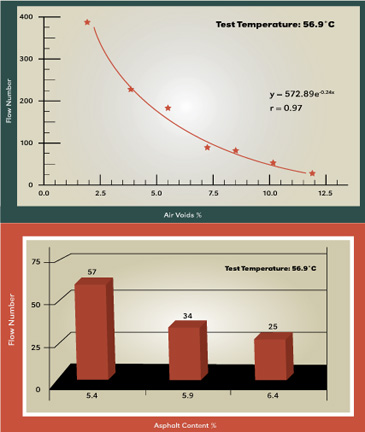 Confined, or unconfined – that is the question
Confined, or unconfined – that is the question
Whether ‘tis nobler in the lab to suffer
The lower flow numbers created by the unconfined state
Or to take solace in the warm embrace of confining pressure
And by doing so, complicate the procedure.
– Phillip “Hamlet” Blankenship
You probably recognize this lame adaptation of one of the most famous soliloquies in Shakespeare’s “Hamlet” to make it relevant for testing using the Asphalt Mixture Performance Tester (AMPT). A soliloquy, for those who don’t know, was the 17th century equivalent of a “tweet.” If Hamlet were to tweet about the Flow Number test, he might say “I don’t know if it is worth the hassle in the test procedure to test asphalt samples confined.”
A little history first: the original vision of the Superpave mix design system was that volumetric mix design (Level 1) would serve as the basic level of design. Then as the level of project traffic increased, performance-related tests and analyses would also be used. Unfortunately, several factors – not the least of which was the apparent complexity and high cost of the equipment, tests and analysis procedures – led to the rethinking of the design system. As such, for years users were left with a basic volumetric mix design procedure with no strength test to ensure performance.
This deficiency led to a national research project that identified several potential simple performance tests. One of the tests that correlated with the rutting performance of asphalt mixtures was the axial flow number test using the AMPT. This procedure uses a 100-mm diameter by 150-mm height test specimen that has been cut from a larger compacted specimen or core. The specimen is tested at the selected high pavement temperature for the project. Permanent deformation is measured in the specimen until the point where the specimen exhibits tertiary flow. Tertiary flow is a condition where shear deformation occurs in the specimen under constant volume, like what happens in the field when rutting occurs. The number of test cycles it takes until tertiary flow starts is called the flow number.
Depending on the type of mix and/or user’s preference, the specimen can either be tested in a confined or unconfined condition. The confined condition likely better simulates the stress and strain felt by a piece of asphalt pavement as it exists in the road by enclosing the specimen in a latex membrane and applying a confining pressure during the test.
Ay, there’s the rub…the confined test offers a more realistic stress state, but is more cumbersome and takes longer than the unconfined test. As such, many technicians prefer to use the unconfined version of the test – which is probably OK for many dense-graded asphalt mixtures. Open-graded or gap-graded mixes (like SMA) may need confining pressure to get an accurate idea of their rutting characteristics.
Regardless of confinement, the flow number is determined for the specimen and ultimately compared to specification values. The higher the flow number, the longer time until tertiary flow starts and the better the rutting resistance of the mixture. The charts provide an idea of how flow number can change with changes in the asphalt content and percentage of air voids of a mix specimen.
Decisions about temperature, axial stress and confining stress will have an impact on the ultimate results that come from testing. Look for more guidance to come in the future, as these choices are not much ado about nothing.
Mike Anderson is the Director of Research and Laboratory Services at the Asphalt Institute.














